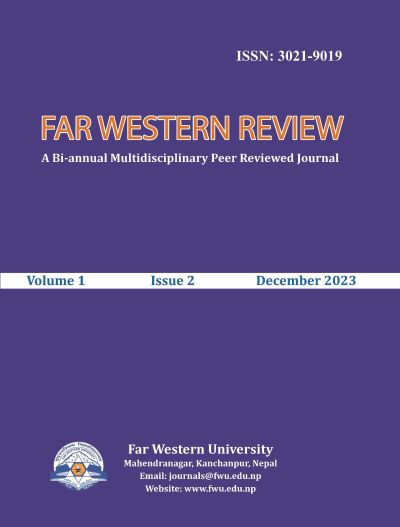What Artefacts may Reveal and Hide about Power? Insights from the Pillars at Ningalasaini Temple, Far West Nepal
DOI:
https://doi.org/10.3126/fwr.v1i2.62113Keywords:
Ningalasaini, Dehimandu, pillar, stakeAbstract
This paper deals with a type of organisation found at the temple of the goddess Ningala Saini, in Dehi Mandu, Baitadi district, Far Western Nepal. The temple is located in a region where small independent kingdoms ruled by Chand Thakuri kings developed after the fall of the Khas Malla Empire (12-14th century), between the two antagonistic powers of Kumaon to its east, and of Doti, to its west. The temple of the goddess Ningala Saini stands as a neutral territory, ruled by lower-rank ritual kings, and it presents a complex arrangement of artefacts related to power. Supported by massive wooden pillars, carved with motifs, the temple is also surrounded by a forest of pillars or posts (kham, maul) of varying sizes, colours and shapes. The paper aims to explore the variety of signs that the different pillars found at Ningala Saini stand for, and what they may reveal, or purposely hide, of the local configuration of power.
Downloads
Downloads
Published
How to Cite
Issue
Section
License

This work is licensed under a Creative Commons Attribution-NonCommercial 4.0 International License.
CC BY-NC: This license allows reusers to distribute, remix, adapt, and build upon the material in any medium or format for noncommercial purposes only, and only so long as attribution is given to the creator.




